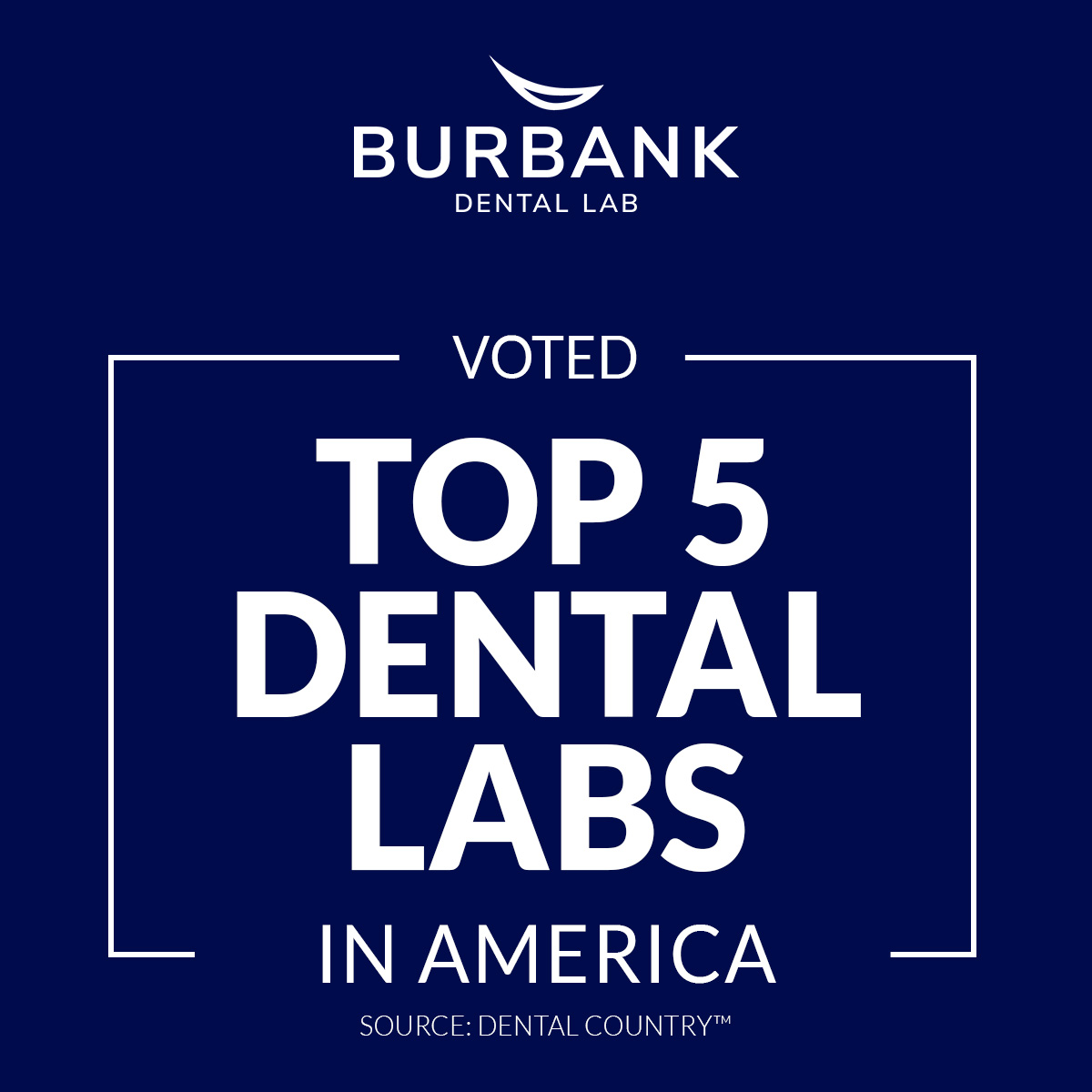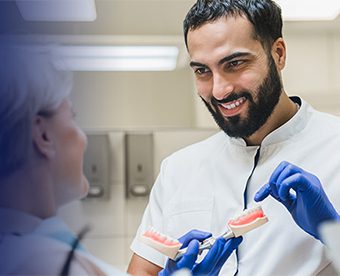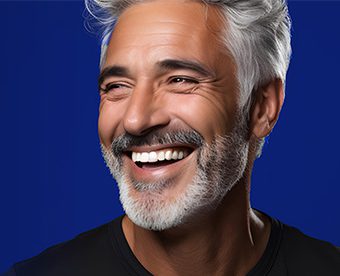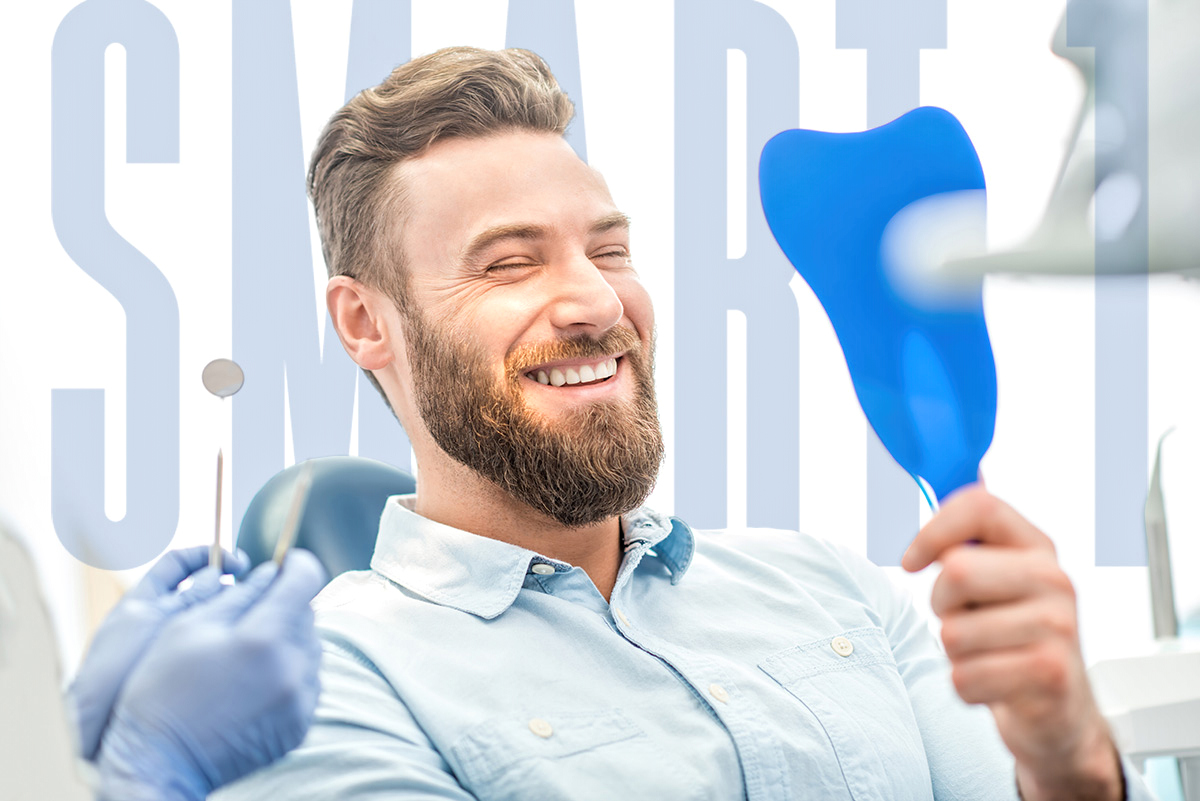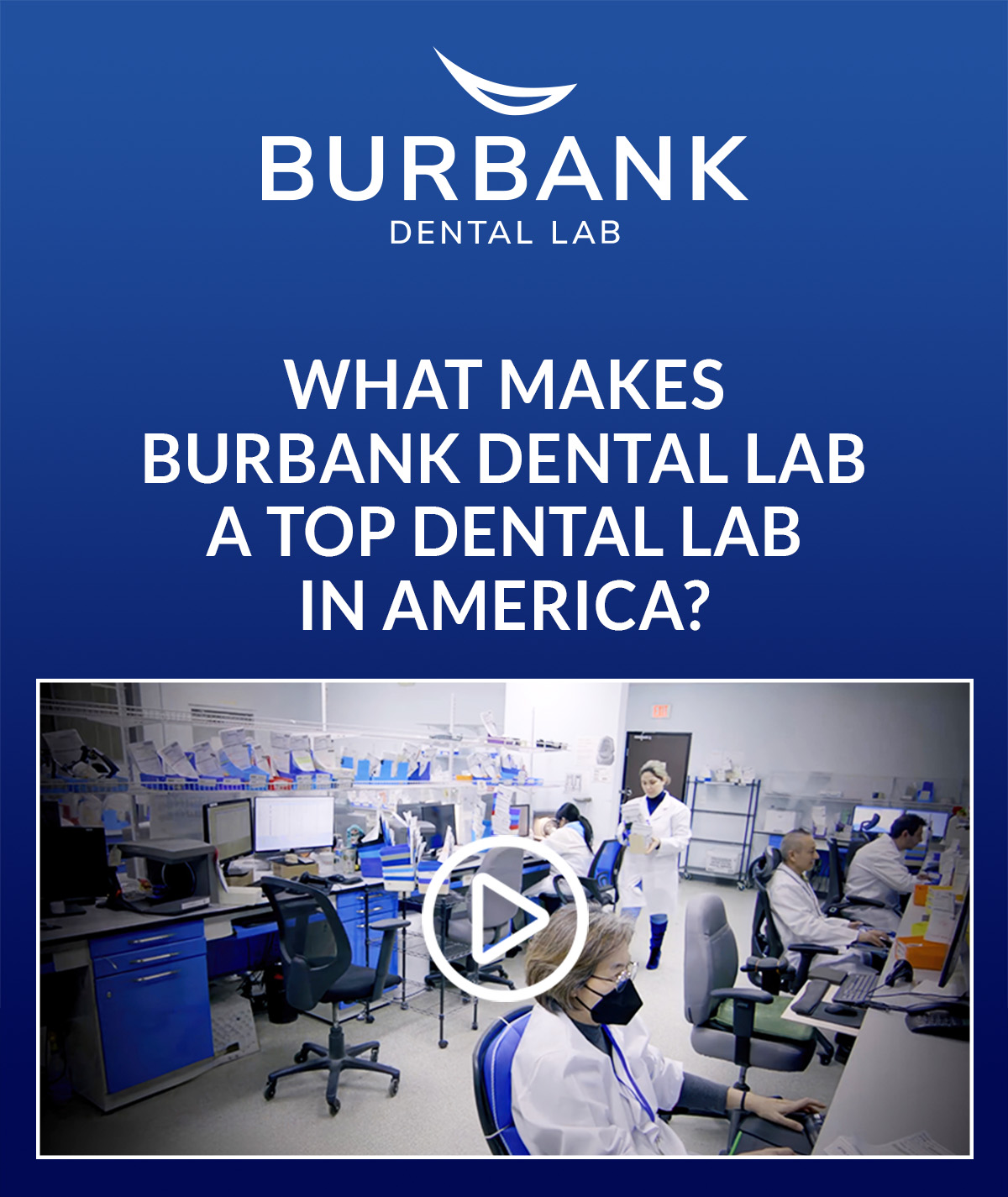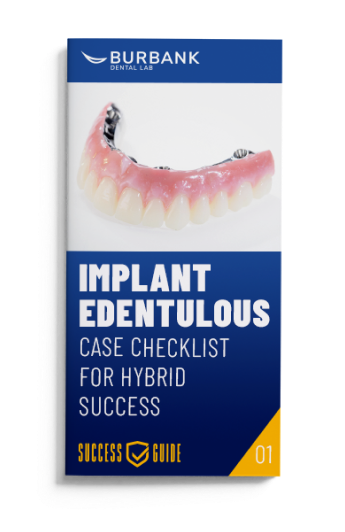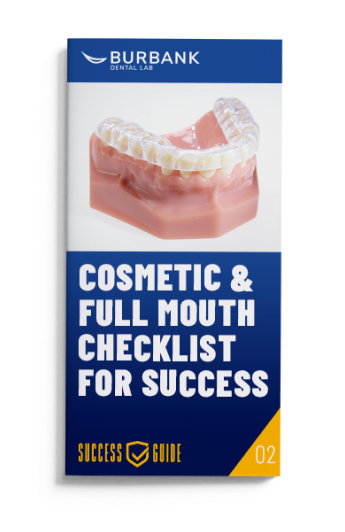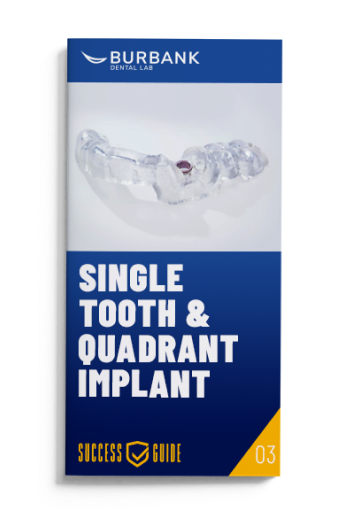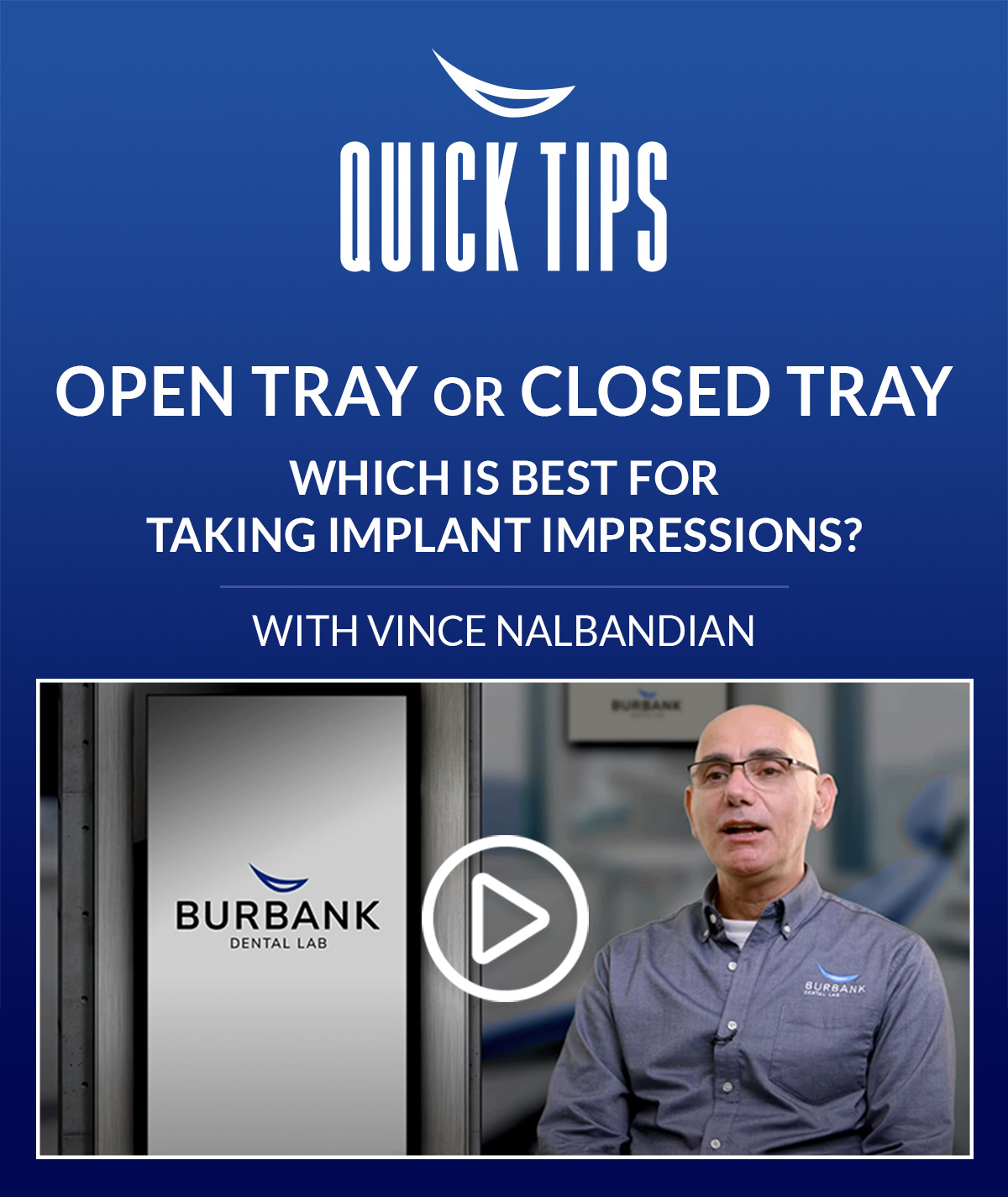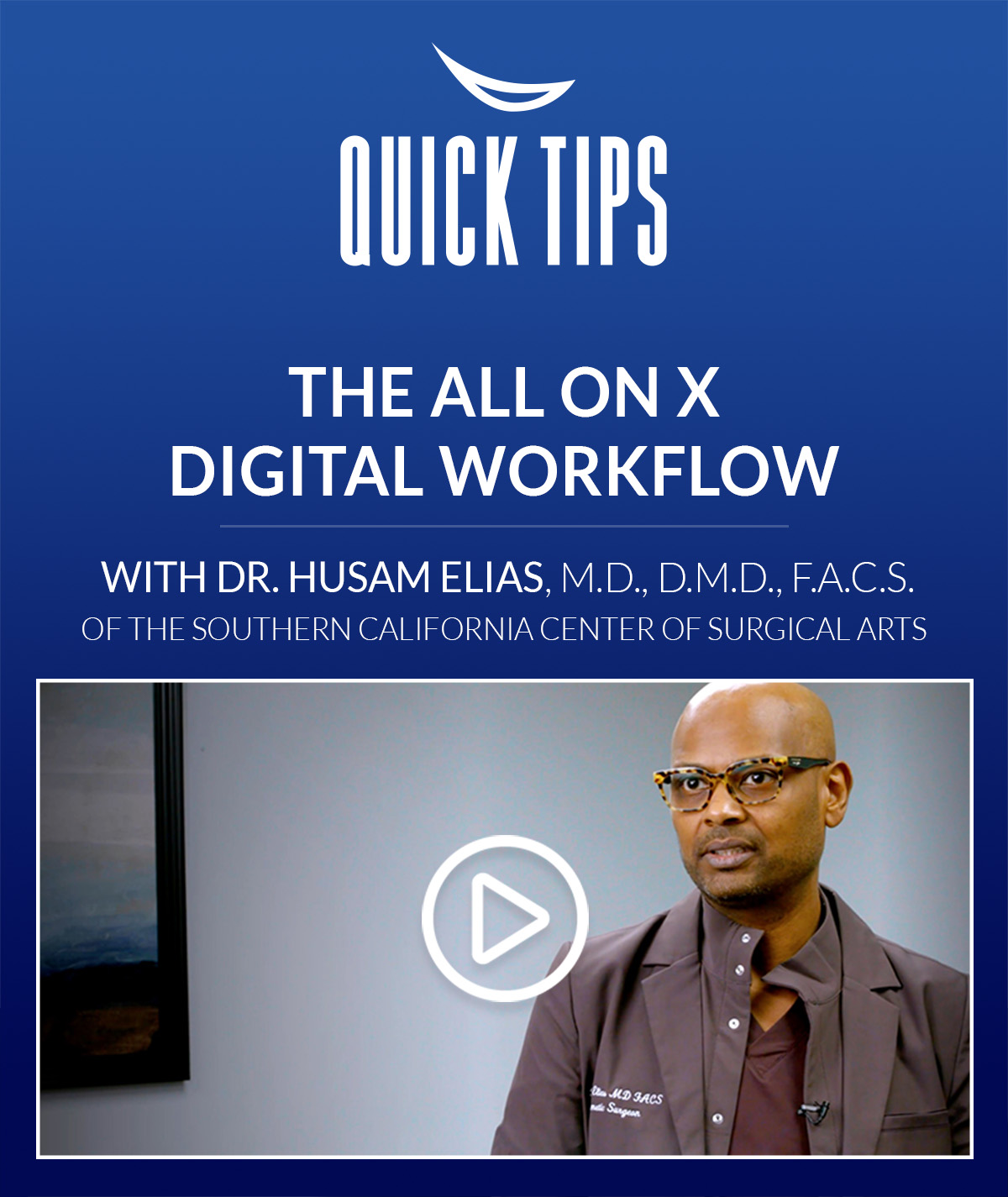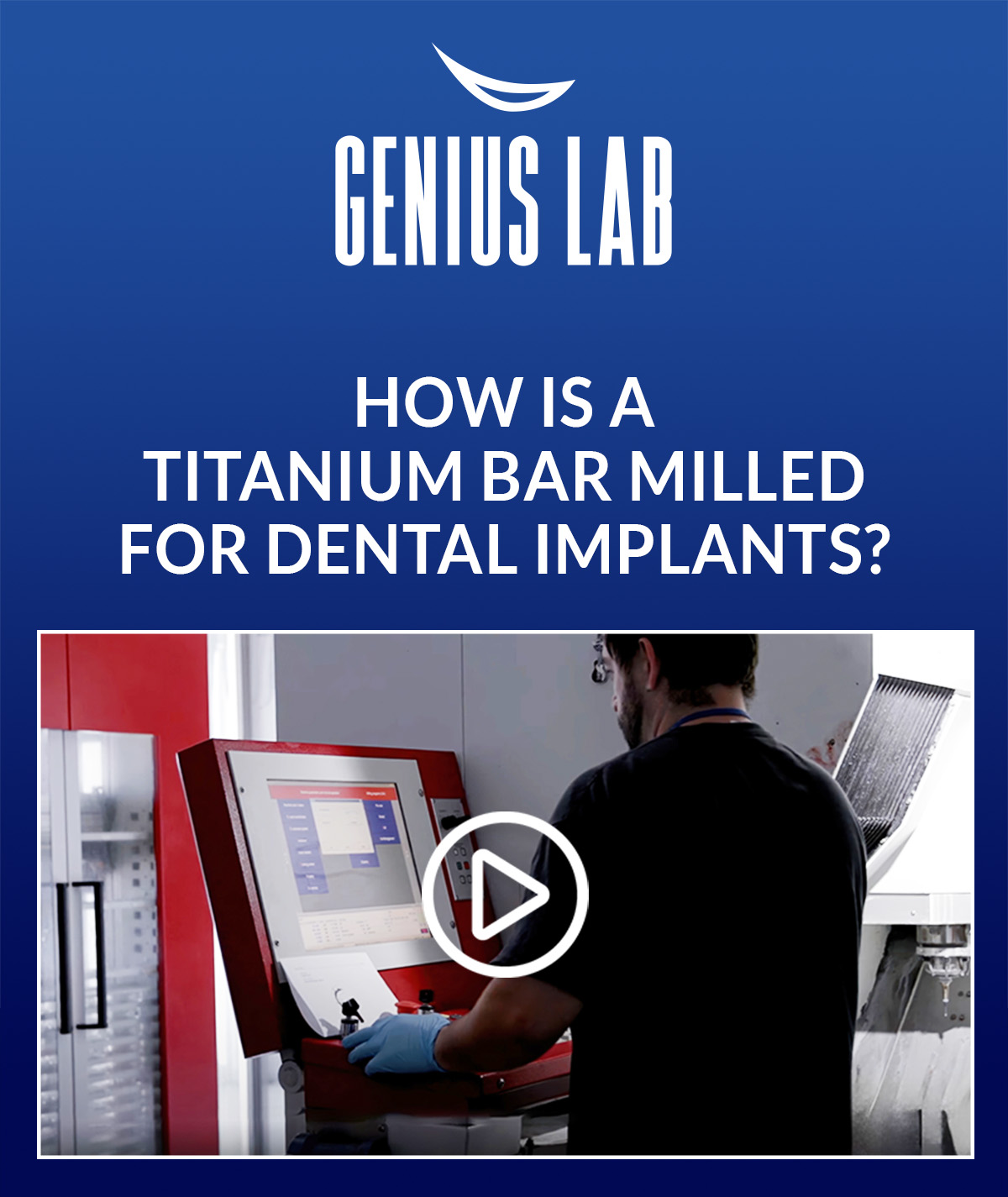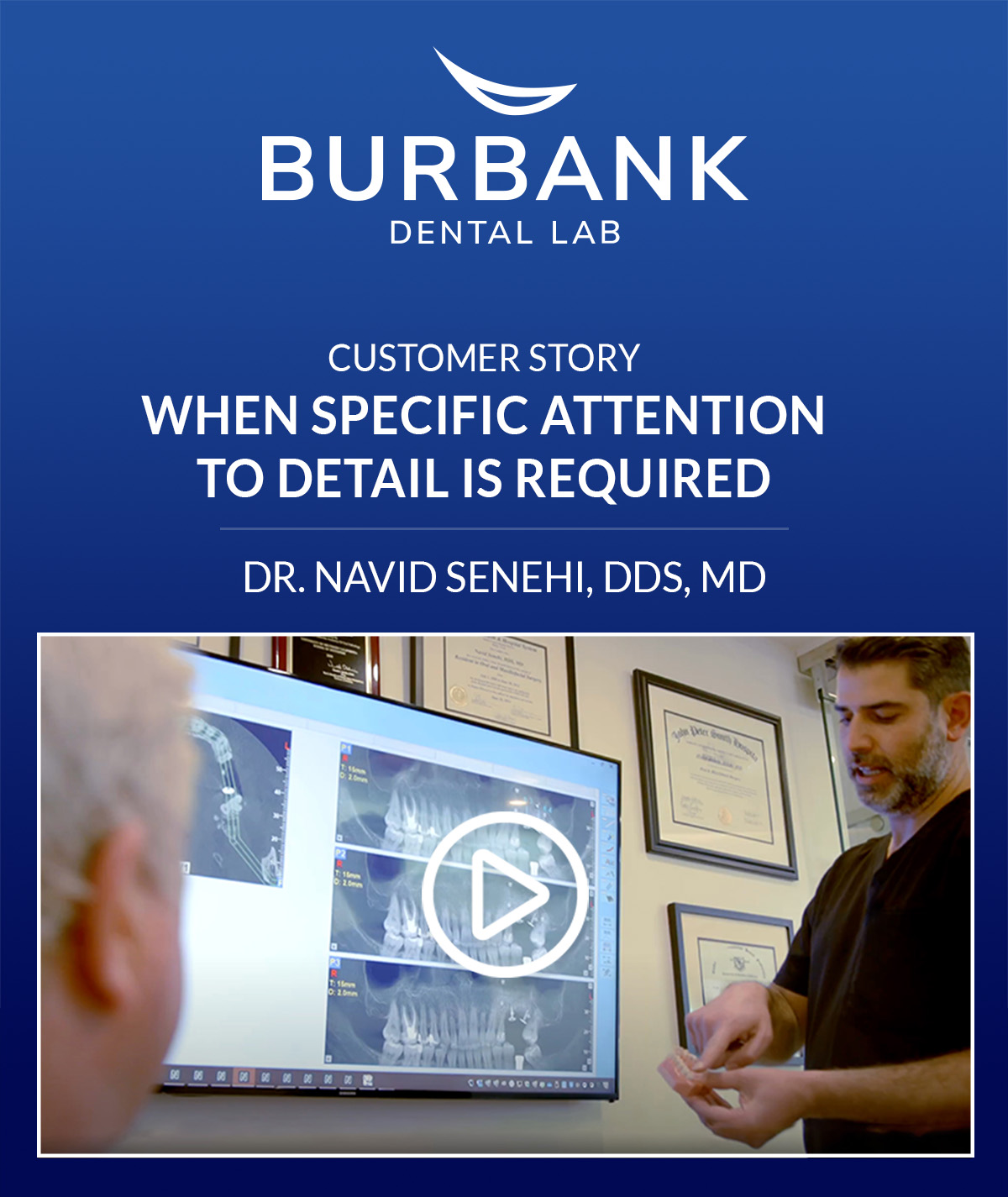One of the most common options for treating an All On 4 dental implant case is a hybrid prosthesis. However, not all “hybrids” are created equal. We are a long way from the days of the only option being a cast metal substructure with traditional acrylic and denture teeth.
To begin, let me define what a hybrid is, as there are various vague interpretations of the term. It appears that the term was coined because this prosthesis combines denture technology with screw-retained implant restorations, resulting in a hybrid denture, also known as a fixed/removable. The objective was to offer patients a non-removable alternative that could still be removed by the clinician for regular cleaning, tightening, and screw replacement.
In 2025, hybrid dentures offer a range of material options such as traditional metal with acrylic or metal-free alternatives like zirconia. These dentures are designed to mimic the appearance and functionality of natural teeth.
At Burbank Dental Lab, you can choose from four categories of implant hybrid restorations for screw-retained full arch “denture” prosthesis. Let me give you a brief overview of each category and compare and contrast them.
FREE TO DOWNLOAD – SUCCESS GUIDES
DOWNLOAD A GUIDE
4 Types of Implant Hybrid Restorations
1. Traditional Acrylic with Titanium Substructure
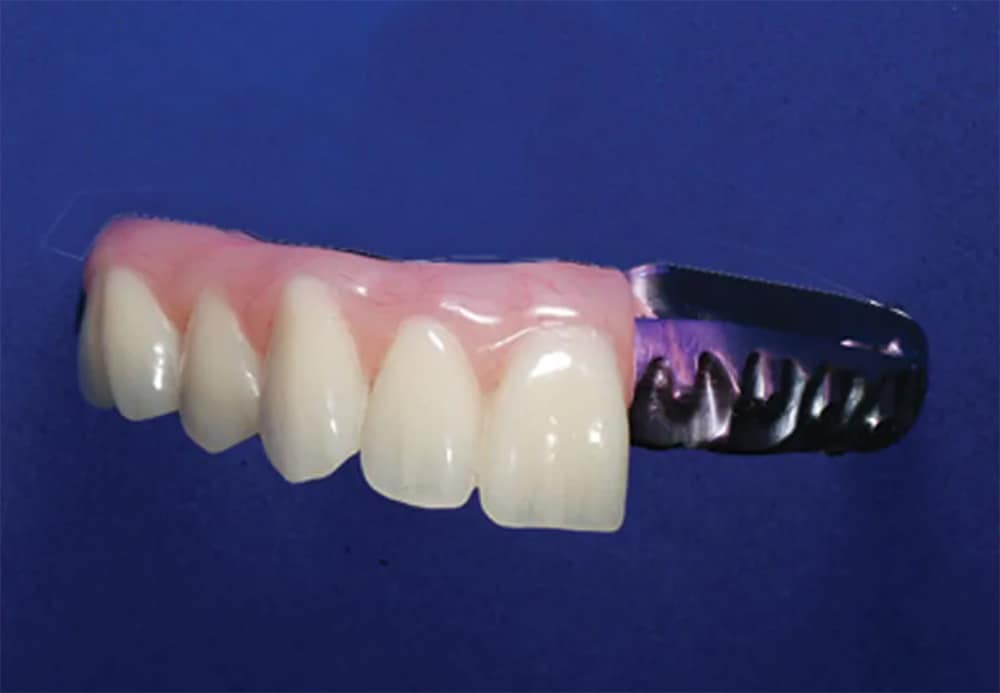
This restoration is fabricated using a titanium frame designed to merge with the implant interface. Its retentive design accommodates the adherence of acrylic and denture teeth.
Features & Benefits
2. SmartComposite Hybrid Prosthesis
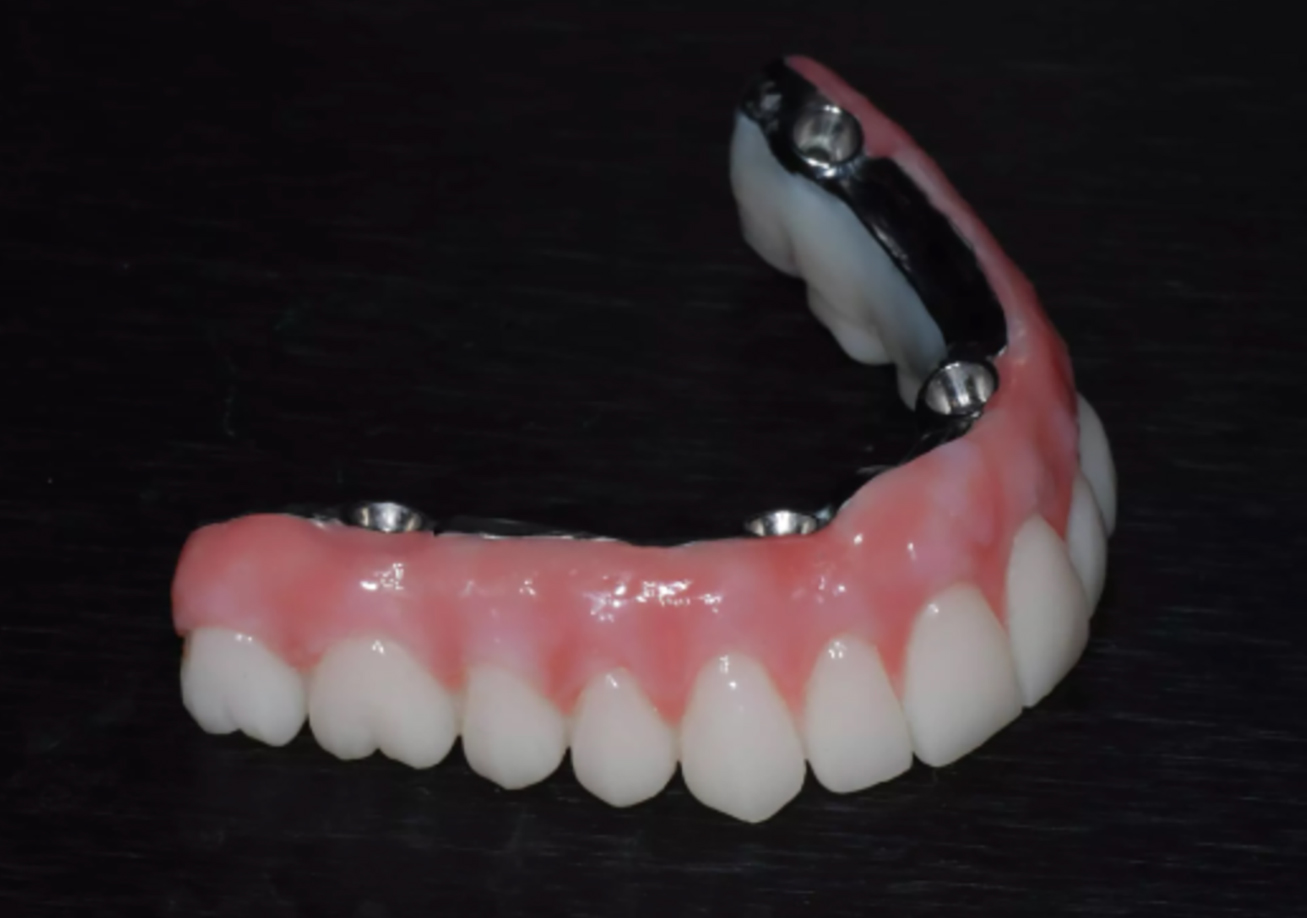
A unique approach within the fixed hybrid category of restorations, SmartComposite is a combination of milled CO/CR and Milled Monolithic Composite.
Features & Benefits
3. ZIRMAX M Hybrid (Monolithic Zirconia Screw Retained Full Arch Prosthesis)
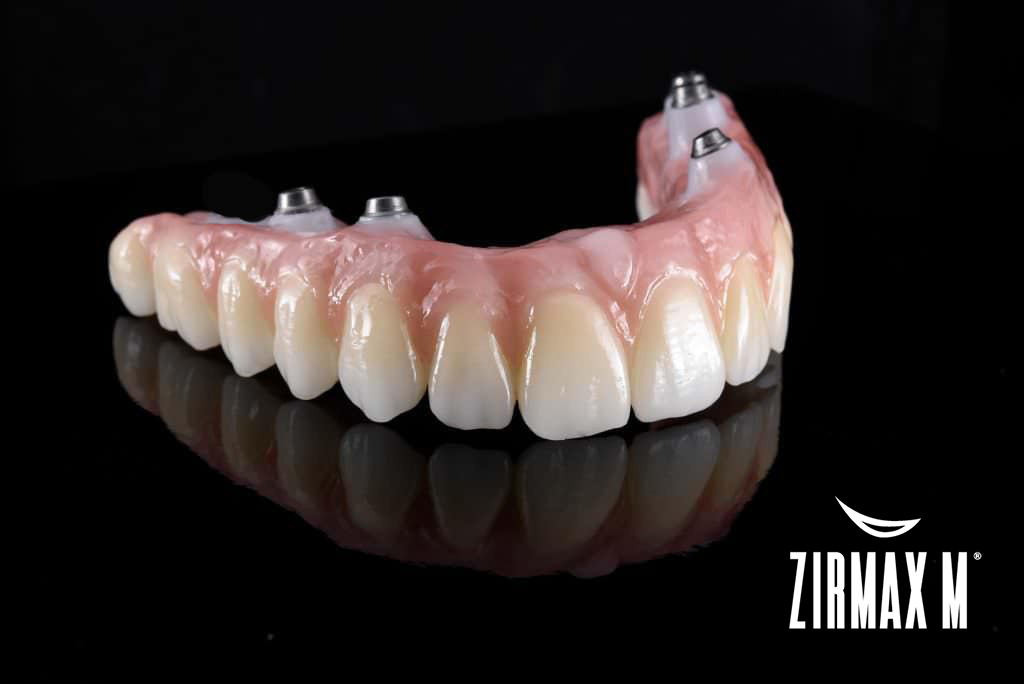
The ZIRMAX M Hybrid is one of the most esthetic and durable restorations for the edentulous patient seeking an implant-retained solution. ZIRMAX M Hybrid Restorations exhibits a flexural strength of up to 1200 MPa, allowing you to deliver a smile restoration that looks natural and will endure even challenging occlusal loads.
Features & Benefits
4. Porcelain Fused to Metal Hybrid Prosthesis
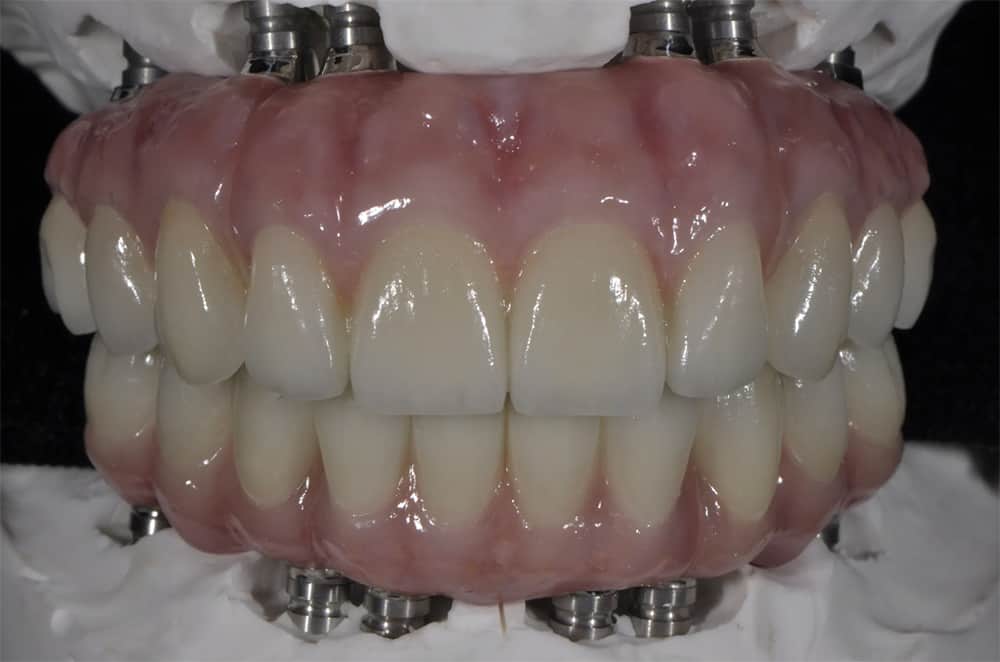
Features & Benefits
With these four hybrid treatment options, there is something for virtually every All On 4 case requirement. The implant department at Burbank Dental Lab can help you determine which type of hybrid will work best for your case.
